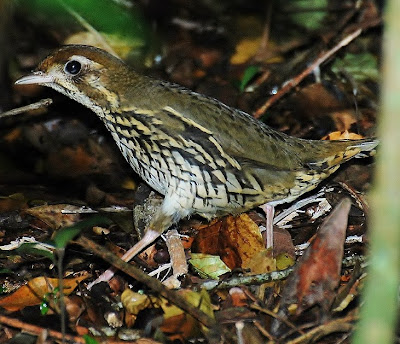Chamaeza campanisona
 |
| Photo by Paulo Fenalti (Flickr) |
Common name:
short-tailed antthrush (en); tovaca-campainha (pt); tétéma flambé (fr); tovacá colicorto (es); streifenbrust-ameisendrossel (de)
Taxonomy:
Order Passeriformes
Family Formicariidae
Range:
This species is found in two disjunct areas, one from central and northern Venezuela and along the eastern slopes of the Andes down to Bolivia, and another in south-eastern and southern Brazil, Paraguay and marginally into northern Argentina.
Size:
These birds are 20 cm long and weigh about 70 g.
Habitat:
The short-tailed antthrush is mostly found in tropical rainforests, especially in mountainous areas, but also in some dry tropical forests. They are present at altitudes of 50-1.800 m.
Diet:
They hunt insects and other invertebrates on the ground, occasionally also following army ant swarms to hunt the invertebrates flushed by the ants.
Breeding:
Short-tailed antthrushes nest in a deep tree cavity, lined with green leaves, up to 2 m above the ground. The female lays 3 white eggs and there is no information regarding the length of the incubation period. The chicks fledge 16-19 days after hatching.
Conservation:
IUCN status - LC (Least Concern)
This species has a very large breeding range and is described as fairly common. The population is suspected to be stable in the absence of evidence for any declines or substantial threats.
No comments:
Post a Comment